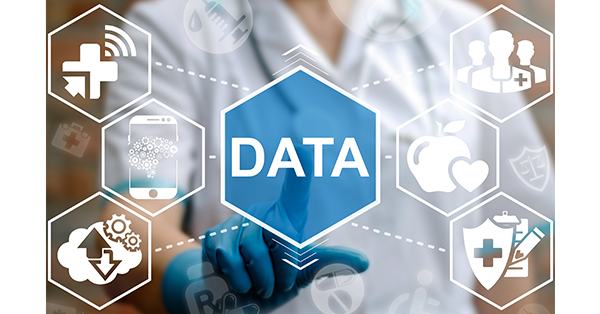– The best resource for monthly healthcare regulatory compliance updates. Compliance Updates: April 2024 Overlook: Licensure Compacts Other Legislation Board Updates Interstate Medical...


Big data and analytics are the 21st century’s gold rush. In every industry digital technology accelerates the influx of data. In healthcare, data governance includes managing individual pieces of protected patient data including patient records, test results, billing records, prescriptions, and other protected health information.
Due to the growth of telemedicine during the COVID-19 pandemic, these pieces of patient data are often transferred electronically via images, video, and/or audio recordings. This electronic healthcare data watershed moment has created a digital data influx for the healthcare industry that allows for drastic improvements in operational efficiency, reduction of costs, and enhancement in safety and in quality of patient care.
Conversely, poor data governance of patient’s protected health information can quickly create significant risks. In 2018, data mismanagement cost the healthcare industry $28 million in fines. 2020 and the surge in telehealth is likely to bring even greater risks. While mismanagement leads to significant financial consequences, it also brings life-threatening risks to patients and compromises healthcare organizations’ reputations in quality of care.
Role of Healthcare Data Governance
Data governance in healthcare is defined by the American Health Information Management Association (AHIMA) as “the practice of managing data assets throughout their lifecycle to ensure that they meet organizational quality and integrity standards. Data governance is geared toward making sure that users can trust their data, which is especially important when making patient care decisions.”
From the time a patient sets foot in a healthcare facility or consult room his or her data must accurately be followed through its entire lifecycle. A responsible data governance program requires that this patient data is used in a secure, ethical, and authorized manner. With increased data access, there are also increasing concerns around data security, ethics, and regulating authorization.
Data Governance and HIPAA
The Health Insurance Portability and Accountability Act (HIPAA) is the US law that covers protected health information (PHI). Under HIPAA, hospitals and insurers are legally responsible for protecting PHI.
To fulfill HIPAA responsibilities healthcare organizations must maintain a strong data governance plan with high-quality analytics. In addition to its risk to patients, a weak data governance plan can also incur financial consequences for organizations, including fines and the costs of remediation and auditing.
Hindrances of Data Governance in Healthcare
As electronic health data has increased access to and volume of patient information, significant challenges have also emerged in data governance. Most notably, the increased volume of data can require additional time and resources to manage.
Mismatched patient records are also a growing problem. Although most CIOs agree that patient record matching is a high priority, very few know the rate of duplications and mismatched records at their facilities. These issues are exacerbated during busy times such as national health emergencies or organizational changes such as mergers and acquisitions.
Christine Cassel, the National Quality Forum President, and CEO stated, “Everybody needs and deserves to have consistent and accurate information about healthcare. That’s easy to say, but in a world where data sources are multiplying by leaps and bounds and where there’s a growing emphasis on tying payment to performance, there’s a lot of complexity when it comes to actually implement systematic improvements.”
Increased accessibility escalates privacy and security threats; the higher volume also puts more pressure on administrative departments to ensure that information is reliable and accurate. The electronic environment intrinsically increases the probability of compromised data integrity. Organizations must therefore proactively mitigate risk through diligent data management and governance systems.
Master Data Management
Critical business data shared among multiple systems is called master data. In healthcare, master data is divided into two types:
When you’re confident that your master data is current and accurate, systems can cross-departmentally and cross-organizationally work on a single source of truth. A master data management system is critical to track patient data.
Because master data management (MDM) and data governance are labeled differently, they are often thought of as mutually exclusive, but data governance rules are intrinsically tied to healthcare data such as PHI. Master data management (MDM) requires data governance because data governance rules ensure the quality and privacy of the master data.
The best way to implement strong data governance into today’s data-driven healthcare practices is to integrate automation into data management. If your healthcare organization is drowning in data, it’s time to do something about it. Verisys screens and credentials millions of providers against 5,000 federal and state primary sources. Verisys’ end-to-end provider credentialing will reduce your administrative burden and optimize provider data and analytics. Contact Verisys to learn how you can create secure data systems that will save you time and keep your patients safe.
 |
Written by Verisys Verisys transforms provider data, workforce data, and relationship management. Healthcare, life science, and background screening organizations rely on our comprehensive solutions to discover their true potential. Visit verisys.com to learn how we turn problems into power.
|